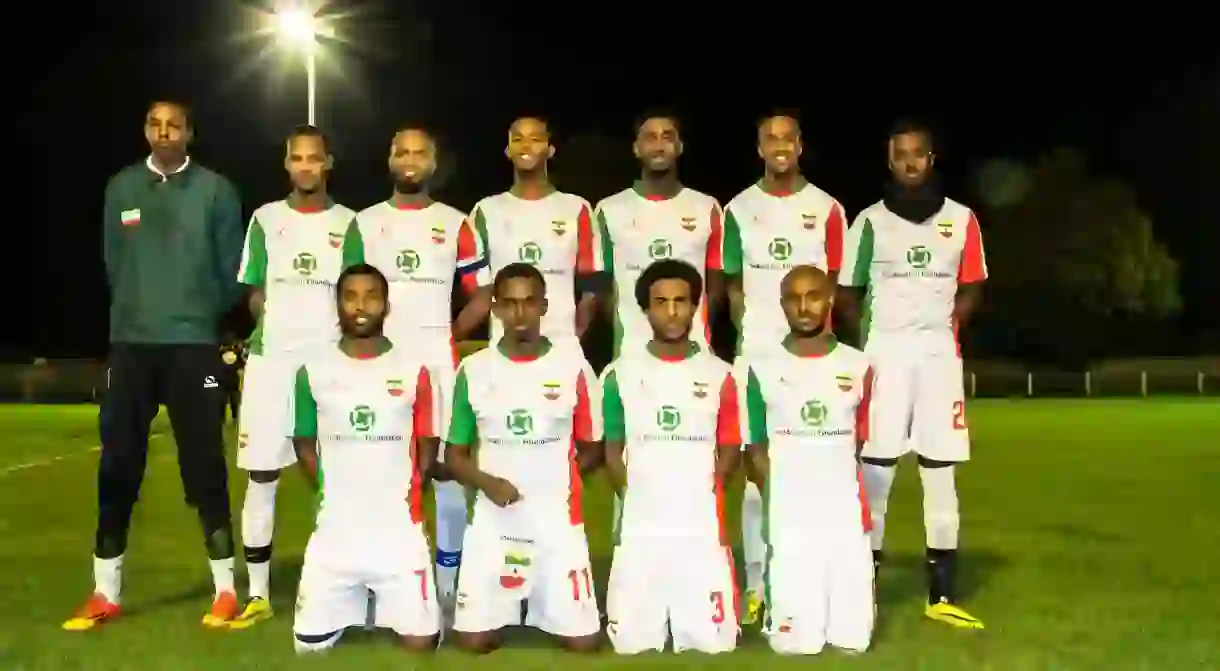The Soccer Competitions Giving 'Unrecognized' Countries a Stage

The World Cup is the pinnacle for any footballer, representing your country on the grandest stage, but what if your country doesn’t officially exist? There are now a number of different tournaments that give “unrecognized” nations the chance to compete.
Across the globe there are disputed territories, historic regions or indigenous races of people, who, according to FIFA — soccer’s global governing body — are not recognized as an official country. Step forward Padania, an area in northern Italy made up of eight regions that have campaigned for independence from the rest of the country. Or perhaps Aymará (the indigenous nation in the Andes and Altiplano regions of South America) could play a match against the Chagos Islands (a group of tropical atolls in the Indian Ocean).

Last year, Abkhazia — a partially recognized state on the eastern coast of the Black Sea in Georgia (according to the United Nations) — hosted the ConIFA (Confederation of Independent Football Associations) World Football Cup. It was the second time the tournament had been held after the 2014 competition in Sápmi (or Lapland, as it’s sometimes referred to) and aims to represent teams unable to join FIFA, whatever that reason may be.
And it’s not just the ConIFA World Cup providing a platform, a whole raft of organizations have sprung up to hold similar versions of the tournament, such as the FIFI Wild Cup, UNPO Cup, VIVA World Cup, ConIFA World Football Cup, ELF Cup and Football at the Island Games.
In an interview for the BBC, Per-Anders Blind, the president and co-founder of ConIFA, and a native of the indigenous Sami people of Scandinavia, said the tournament was about giving a voice to previously unheard nations or peoples.
“For me, it’s a peace project,” he said. “We have a mission to create a global arena for the forgotten people, we have so many members that are not recognised around the world. We want to educate the world about all the different ethnicities and indigenous people that we have on this planet.”

2016 ConIFA World Football Cup Participants:
Aymará
An indigenous nation in the Andes and Altiplano regions of South America.
Ellan Vannin
Team that represents the Isle of Man.
Padania
Area that is made up of eight northern regions of Italy.
County of Nice
The historical region of France, located in the southeastern part of the country.
Abkhazia
A partially recognised state on the eastern coast of the Black Sea and the southwestern flank of the Caucasus Mountains.
Raetia
A province that existed during the Roman Empire. The area covers eastern and central Switzerland (containing the Upper Rhine and Lake Constance), southern Bavaria and the Upper Swabia, Vorarlberg, the greater part of Tirol, and part of Lombardy.
Somaliland
A self-declared state internationally recognised as an autonomous region of Somalia.
Chagos Islands
A group of seven atolls comprising more than 60 individual tropical islands in the Indian Ocean about 500 kilometres (310 mi) south of the Maldives archipelago.
Iraqi Kurdistan
Located in the north of Iraq and constitutes the country’s only autonomous region. Sometimes referred to Southern Kurdistan.
Panjab
Represent the Punjabi diaspora, referring to the descendants of ethnic Punjabis who emigrated out of the Punjab region to the rest of the world.
United Koreans of Japan
The team that represents the ethnic Korean residents of Japan, who currently constitute the second largest ethnic minority group in Japan.
Northern Cyprus
Officially known as the Turkish Republic of Northern Cyprus, the area comprises the northeastern portion of the island of Cyprus.
Romani people
A traditionally nomadic ethnic group, living mostly in Europe and the Americas and originating from the northern regions of the Indian subcontinent.
Sápmi
Represents the people who inhabit northern parts of Norway, Sweden, Finland and Russia.
Western Armenia
The area representing the Armenian indigenous people primarily from the region of Western Armenia, which according to Armenian scholars, was on territory occupied by Turkey.
Székely Land
A historic and ethnographic area in Romania, inhabited mainly by Hungarians and Romanians.













